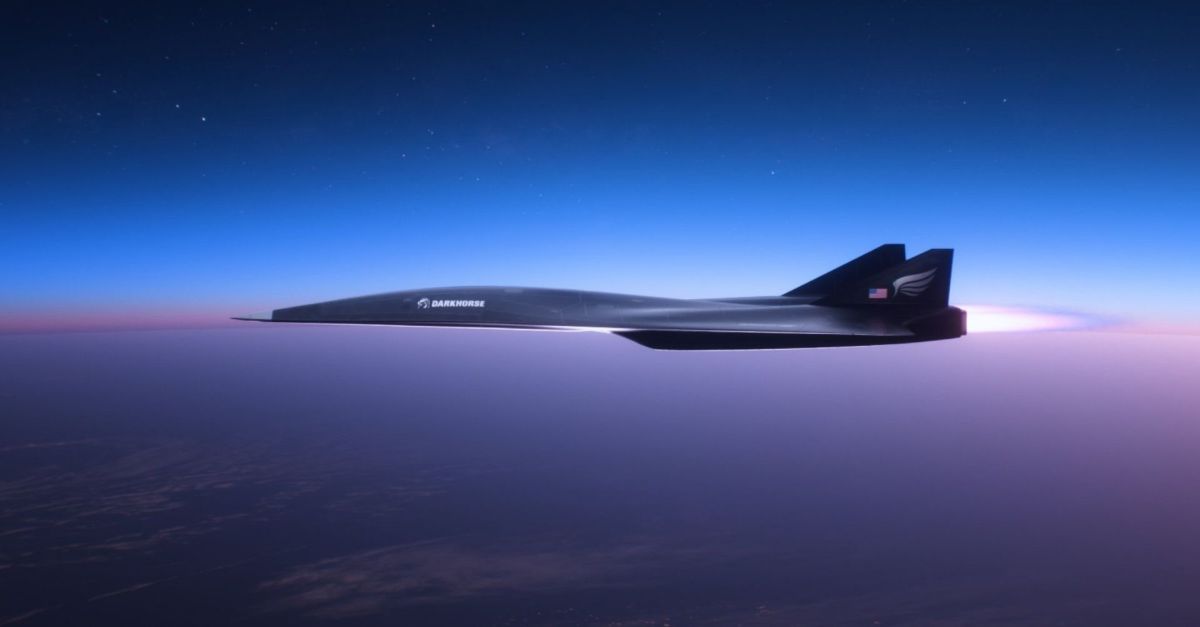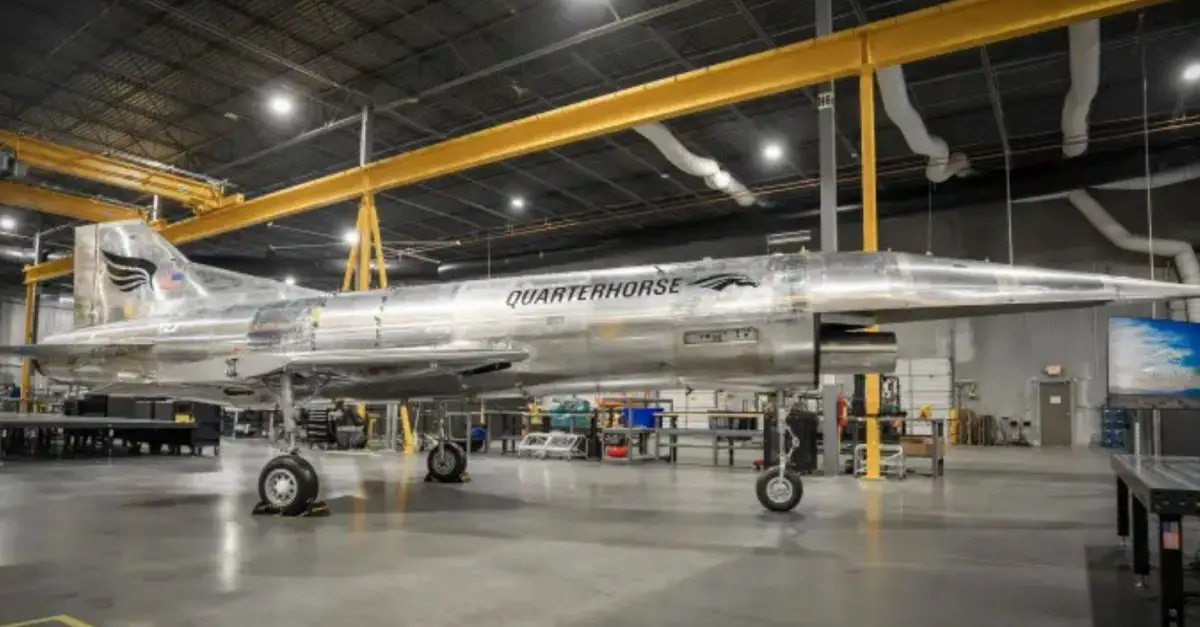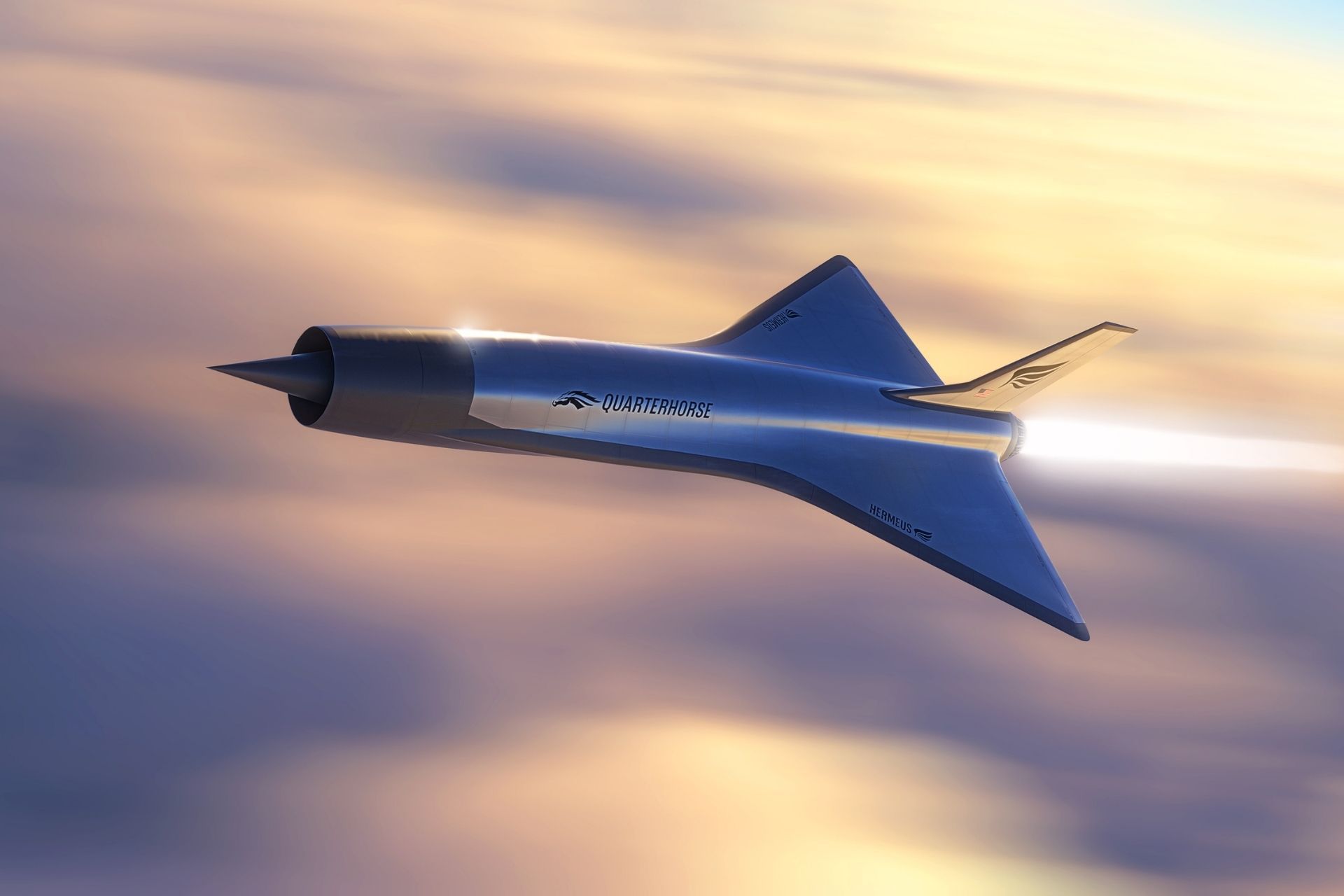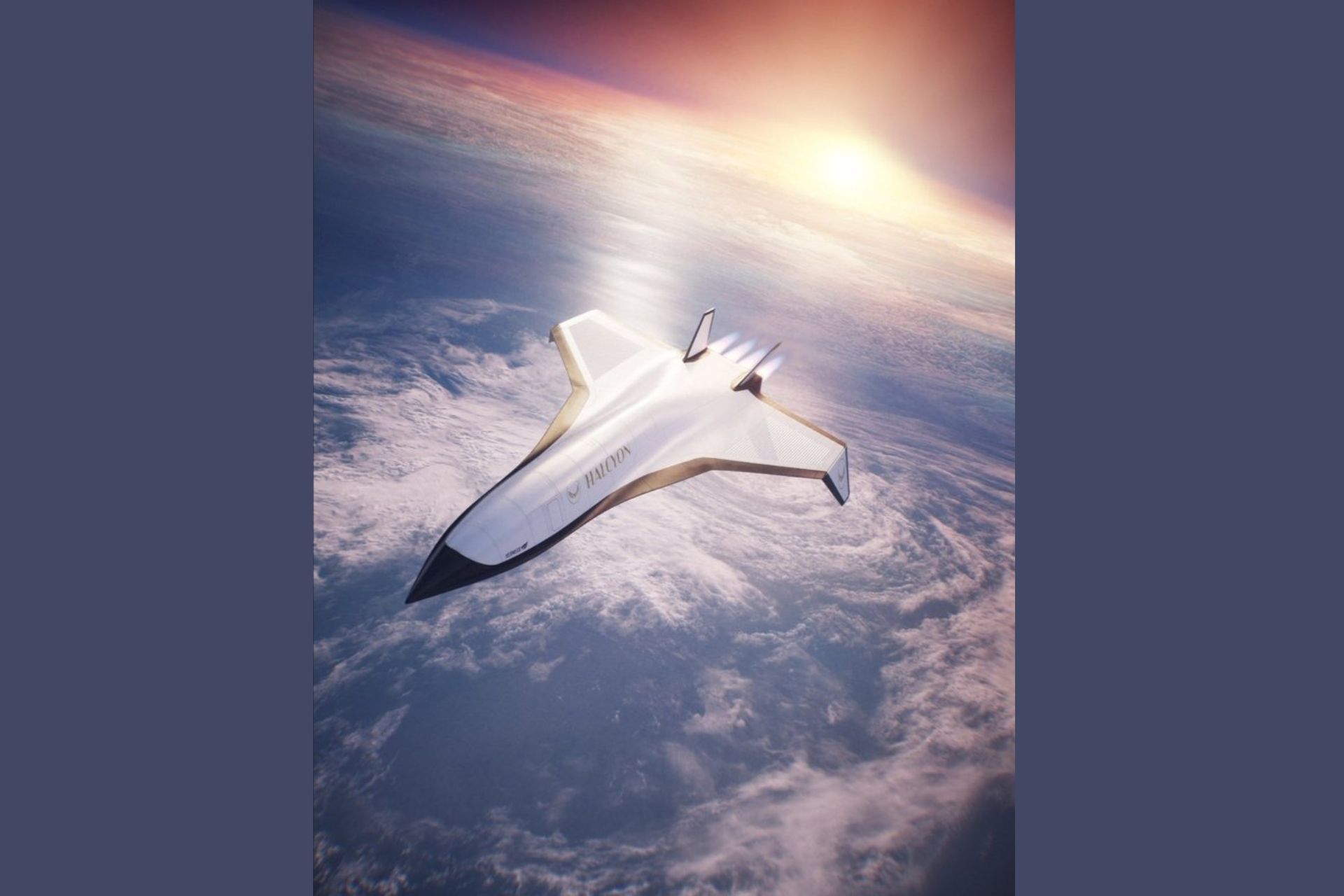Breaking news
Analysis: Hermeus Corporation start-up who drives US hypersonic UAV program.
In the United States, hypersonic technology R&D is mainly supported by huge companies but some of several advanced projects are done by small start-ups. One of these is Hermeus Corporation, founded in the late last decade. It is currently working on the experimental Quarterhorse aircraft series. With these, it plans to gain experience and develop technologies for the creation of fully operational hypersonic aircraft.
Follow Army Recognition on Google News at this link

Presentation view of Darkhorse hypersonic UAV by Hermeus (Picture source: Hermeus )
Preliminary studies were completed in 2022, allowing Hermeus to progress in the development and construction of the Quarterhorse Mk 0 drone. This drone was intended solely for ground tests such as taxiing and running, which simplified its design and also sped up the process. The finished Mk 0 drone was unveiled in October 2023. The first tests were conducted in January 2024
Technical Specifications of the Drones
Currently, three QuarterHorses were presented. They have similar architecture and design but differ in the composition of their units and devices, sizes, and capabilities. The first experimental Mk 0 is essentially an incompletely assembled Mk 1 flight drone. The upcoming Mk 2 is similar but has serious differences, retaining some of the previous features and receiving new functionalities.
The full-flight prototype Quarterhorse Mk 1 is an unmanned aircraft the size of a modern fighter jet. It is built according to a standard aerodynamic design with a swept wing and a full tail. A high-elongation fuselage with a characteristic nose section is used. Its top part is shaped like a half-cone, and below is an air intake with a beveled entry. This is how they mimicked the design and aerodynamics of a hypersonic aircraft. At the tail of the drone is a General Electric J85 turbojet. Due to the nature of future tests, it was decided to forgo the full use of the new Hermeus Chimera engine, which would not be able to show its full potential. The Quarter Horse Mk 1 is equipped with a remote control system for operation from a ground control station. Through a bidirectional channel, the drone will receive commands and relay telemetry, video signals, etc. It is assumed that opting for a drone over a manned aircraft will allow the collection of all necessary information without risking human lives. The Mk1 prototype is announced as capable of reaching speeds up to approximately Mach 4.

Presentation of Quarterhorse MK1 tests ready by Hermeus (Picture source: Hermeus )
The Quarterhorse Mk 0 prototype, designed for ground testing, was a partially builded Quarterhorse Mk 1 drone. While it featured the main propulsion system of the airframe, it lacked full skin coverage and a tail. This model utilized standard onboard systems, engines, and control equipment.
The forthcoming Mk 2 prototype marks a major difference with its predecessors. It is expected to feature an enlarged frame with a delta wing and a frontal air intake that includes a conical central body, reminiscent of the MiG 21. Details such as dimensions, weight, and performance characteristics of the Mk 2 remain unspecified, with Hermeus Corporation providing limited information about the speeds this prototype can achieve.
The development of the Quarterhorse Mk 2 is slated for completion by the end of 2025, with flight tests anticipated to follow soon after.
Engine Innovation as a Solution
Parallel to the aircraft work, the development of the Chimera engine has been carried out. Its first version was built on the basis of the General Electric J85 series turbojet. The original product was supplemented with a direct flow circuit. In the fall of 2022, such an engine was tested and confirmed its ability to operate in two modes.
Development of a larger and more powerful Chimera II engine is currently underway. It is based on the Pratt & Whitney F100 engine. This engine is intended for the future supersonic drone Mk 2 and subsequent hypersonic aircraft. The development and testing of such a product must be completed before the construction of a project led by Lockheed Martin, in which the Quarterhorse is a development base, is finished, by 2025.

Expected view of QuarterHorse MK2 by Hermeus (Picture source: Hermeus )
Prototypes for an Uninterceptable Weapon Project
The company has unveiled two hypersonic technology concepts: one for civilian use and the other for military purposes. The military concept, named Darkhorse, is a hypersonic drone designed for defense and national security missions, capable of reaching speeds up to Mach 5. Currently, details aren't numerous, but it is comparable to Lockheed Martin’s SR-72 project.
On the civilian front, Hermeus is developing a concept called Halcyon, which is aimed at passenger transport. As of now, this concept exists only in theoretical form and features a distinctively designed wing whose tips can adjust angles. While it maintains a speed similar to Darkhorse, it uses a slightly different engine. According to Hermeus Corporation, this technology could reduce the travel time from Paris to New York to just 90 minutes.

Alleged view of Halcyon hypersonic liner (Picture source: Hermeus )


























